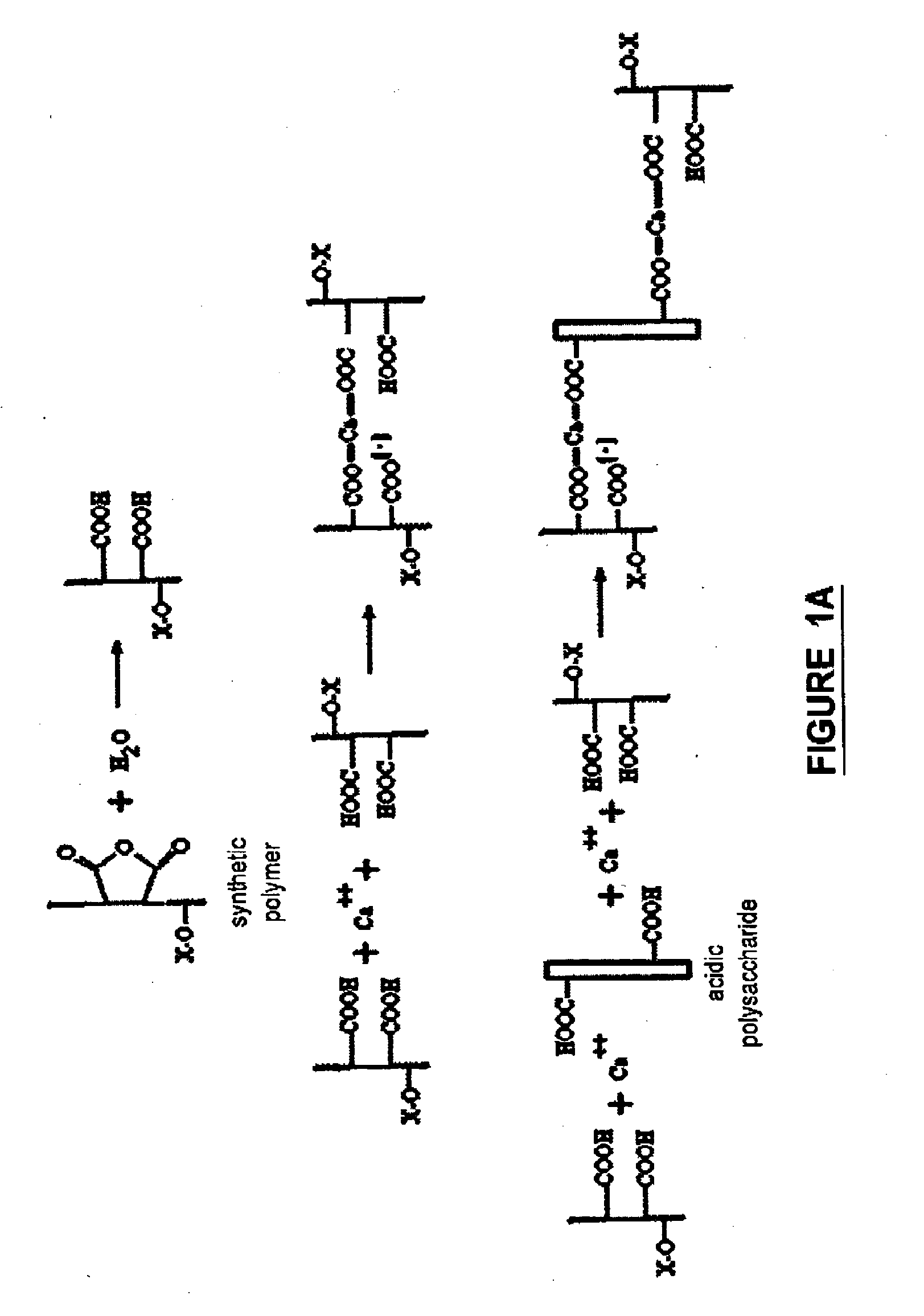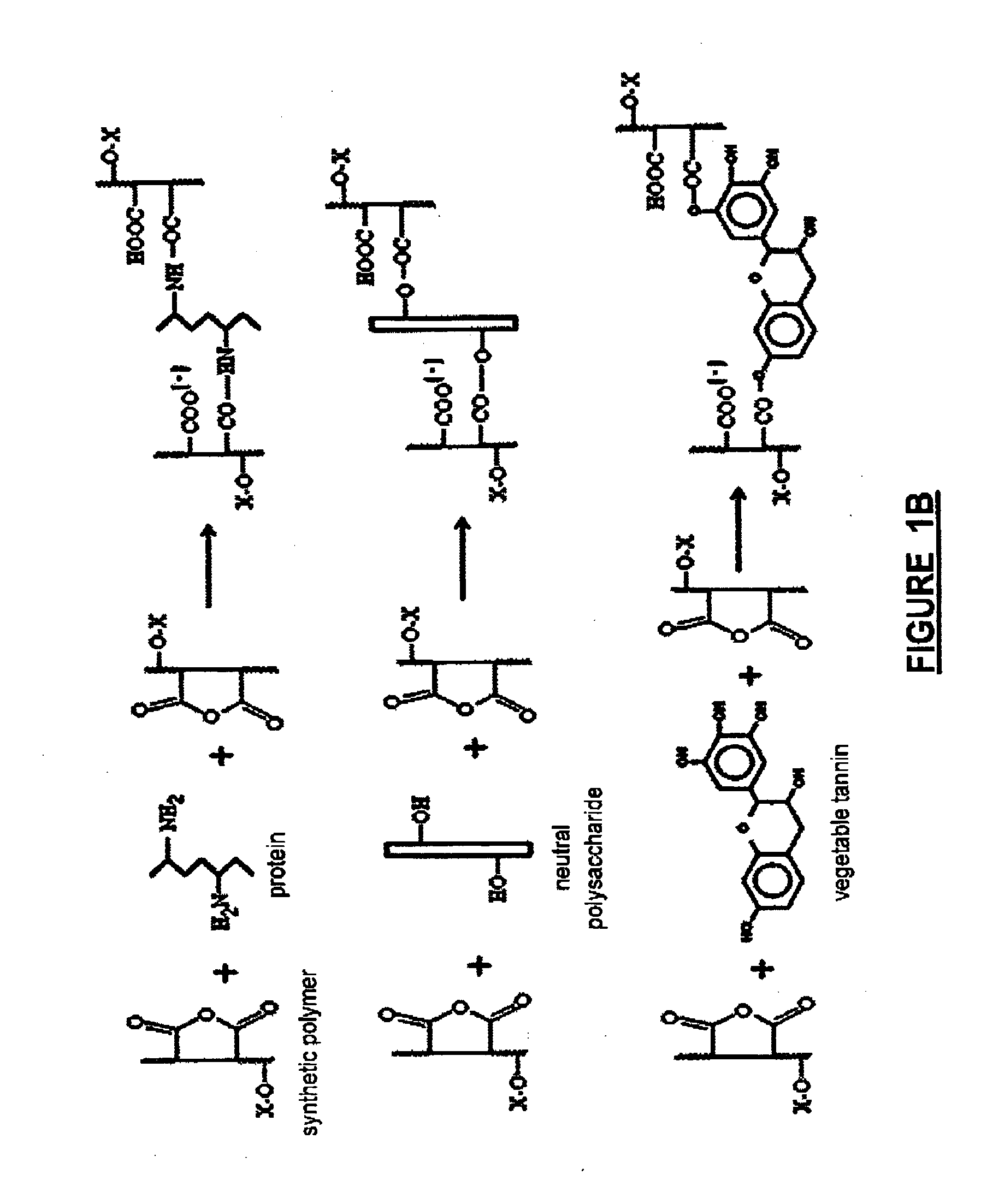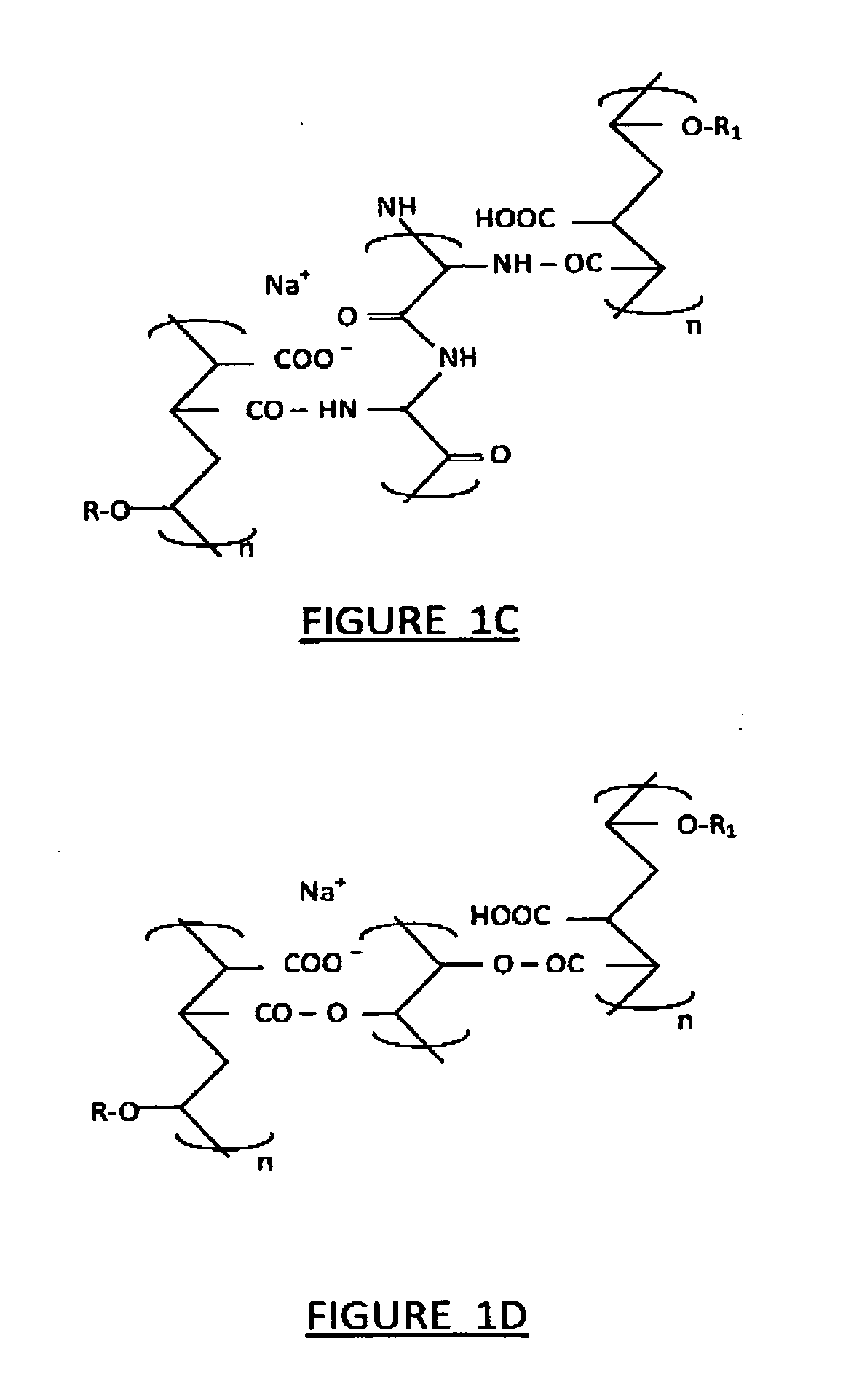Biodegradable fire-fighting formulation
- Summary
- Abstract
- Description
- Claims
- Application Information
AI Technical Summary
Benefits of technology
Problems solved by technology
Method used
Image
Examples
example 1
Preparation of a Solid-Liquid Suspension
[0177]300 ml demineralized water and 160 g of synthetic polymer poly (methyl vinyl ether-co-maleic anhydride) with 200,000 Da average molecular mass, as white powder with specific gravity of 1.018 (GANTREZ AN 119™ from International Specialty Products (ISP)) were placed in a laboratory planetary mixer. After 15 minutes of mixing at room temperature, 150 g of ammonium hydroxide solution was added, and mixed for a further 60 minutes. 610 g of transparent, viscous solution, with a pH=6.85 was obtained.
[0178]200 ml of a solution comprising 6 g vegetable tannin Quebracho (UNITAN CROWN ATO, from UNITAN, Argentina) in demineralized water were placed in a laboratory blender with capacity of 1 Liter (KENNEDY Model KN-310), with 4 g of sulphated castor oil (Actrasol C75™, density 8.6 lb / gal, total Alkalinity 21 mg KOH / g, free fatty acid 4% and SO3 content 3.5%, from CLIMAX Corp.) in which was suspended 16 g guar gum (from SIGMA catalog number G4129-250G...
example 2
Preparation of Gel-Liquid Water Suspension by ‘Solid-Gel’ Method
[0180]250 ml demineralized water and 100 g synthetic polymer GANTREZ AN 119™ were placed in a laboratory blender with a capacity of 2 Liter, as for Example 1, and mixed at room temperature, at a speed of 200 rpm for 5 minutes, to obtain a homogenous suspension. To the suspension was added 50 ml gelatin solution (with Bloom index of 200 and IP=7.2 from SIGMA catalog no. 27, 161-6) of 16% by weight concentration, prepared by simple dissolution of the biopolymer in water at a temperature of 50° C. using a magnetic stirrer. After 20 minutes of homogenization, under slow mixing conditions, 100 ml of NaOH solution of 30% by weight concentration was added, and the stirrer speed increased to 800 rpm for a further 30 minutes at room temperature. 500 g of polymeric material with a pronounced gel character was obtained.
[0181]The polymeric material was then mixed with 150 g of flame retardant TexFRon AG™ and 8 g of sulphated castor...
example 3
Preparation of an Oil-in-Water Emulsion Comprising Gel Particles
[0184]A gel-liquid was first prepared as for Example 2, using a mixture of 10 g of alginate and 4 g of vegetable tannin (Quebracho) instead of gelatin, and 18 g of Na2CO3 instead of NaOH. 508 g of polymeric material in gel form with light brown-reddish color was obtained, to which was added in a blender 45 g of Canola oil and 8 g of sulfonated castor oil as surfactant, with mixing at room temperature for 30 minutes, at a speed of 1000 rpm. The resultant emulsion was transferred to a laboratory blender and mixed with 80 g of flame retardant. 640 g of emulsion with a viscosity of 9460 cps was obtained.
PUM
 Login to View More
Login to View More Abstract
Description
Claims
Application Information
 Login to View More
Login to View More - R&D
- Intellectual Property
- Life Sciences
- Materials
- Tech Scout
- Unparalleled Data Quality
- Higher Quality Content
- 60% Fewer Hallucinations
Browse by: Latest US Patents, China's latest patents, Technical Efficacy Thesaurus, Application Domain, Technology Topic, Popular Technical Reports.
© 2025 PatSnap. All rights reserved.Legal|Privacy policy|Modern Slavery Act Transparency Statement|Sitemap|About US| Contact US: help@patsnap.com



